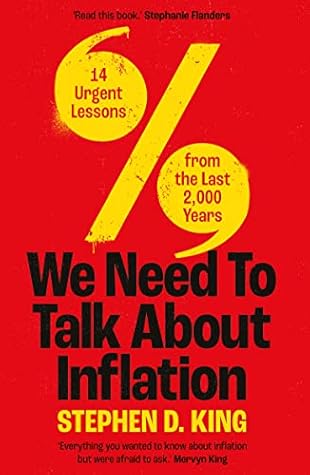Kindle Notes & Highlights
so long as the inflation rate is above the interest rate (in which case, the so-called ‘real’ interest rate is negative).
a way of imposing taxes ‘secretly’ on those with savings. As Edmund de Waal memorably describes in The Hare with
Periods of hyperinflation are not simply stories about the printing of money. As we shall see, they also reflect a collapse in trust regarding money, both as a store of value and as a medium of exchange.
but, rather, that central bankers somehow thought they were operating for many years in a world of greater certainty, underpinned by their own monetary architecture. The evidence in their favour was the idea of sustainably lower
First, in the years following the Global Financial Crisis, they began to offer ‘forward guidance’.
– and in fact more confident – about the future than the millions of people involved in financial markets and the broader
Second, central bankers offered inflation forecasts that always justified their existing monetary stance.
Third, central bankers began to believe their own propaganda,
because the public’s faith in the central banking priesthood was unwavering.
wall. It is also, importantly, an outcome that depends on the public’s willingness to maintain rules of thumb in the face of severe economic and financial adversity. Once those
Either inflation reflects rising prices of most things (goods, services, wages, profits, rents), or instead it reflects the falling value of money. These two perspectives are, in truth, two sides of the same coin.


